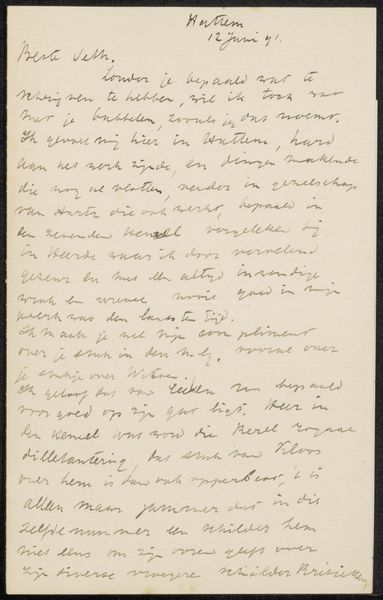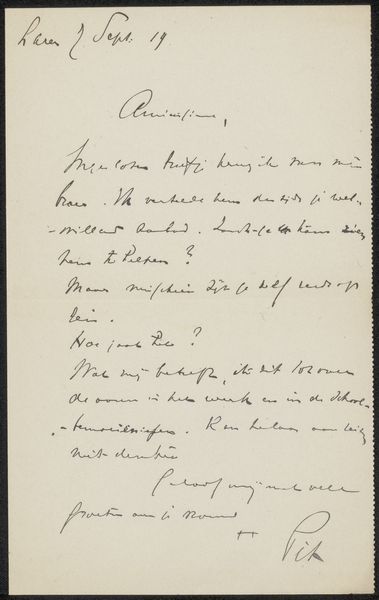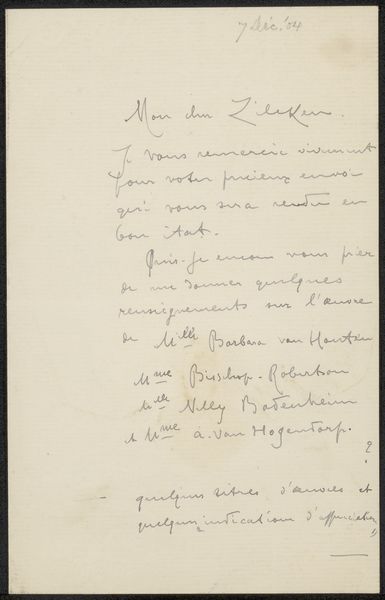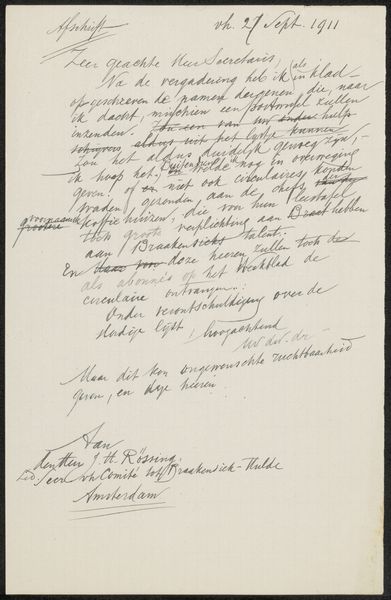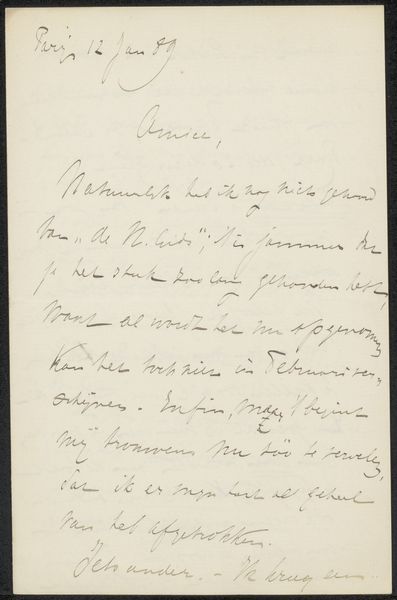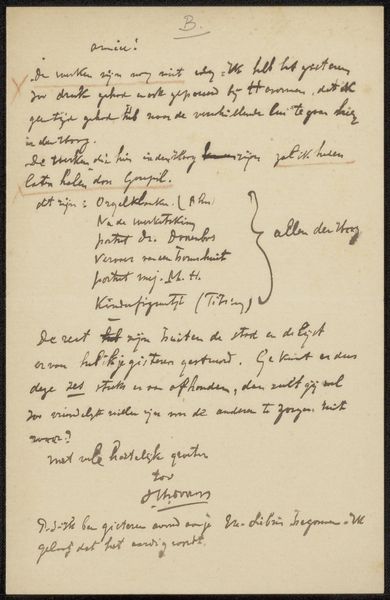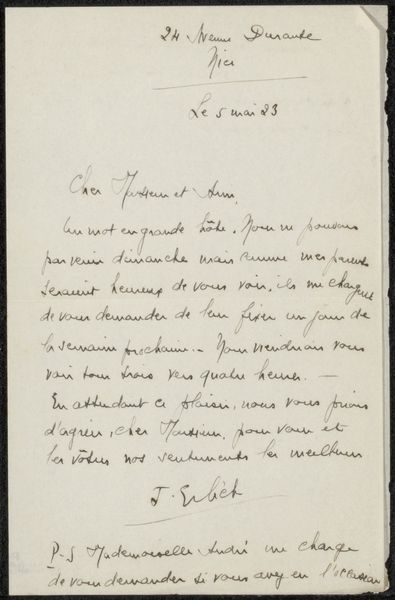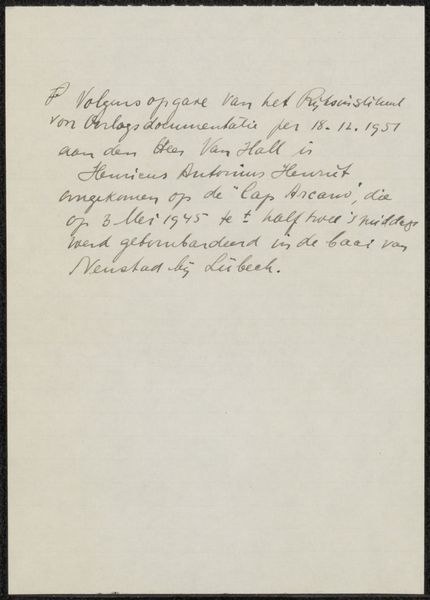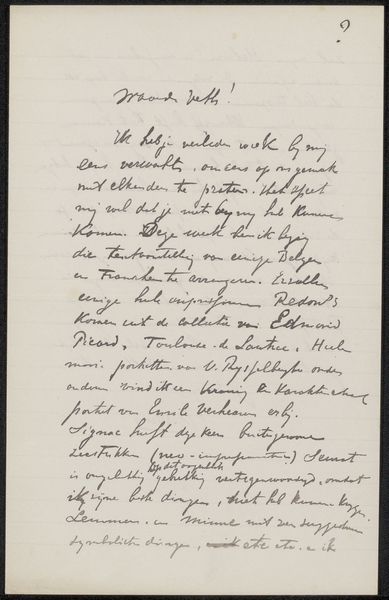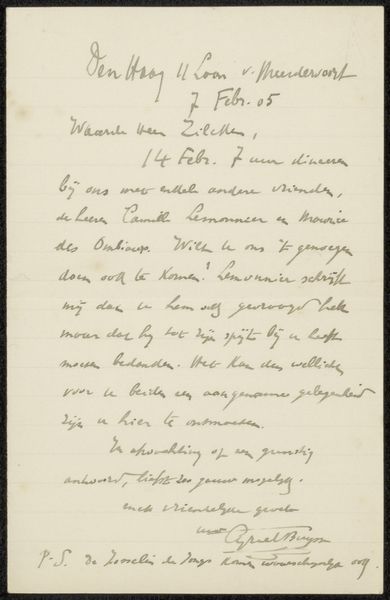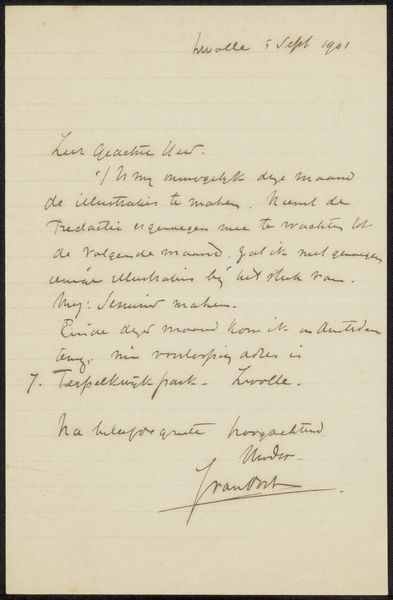
drawing, paper, ink, pen
#
drawing
#
paper
#
ink
#
pen
Copyright: Rijks Museum: Open Domain
Editor: So, this is "Brief aan Philip Zilcken" – a letter, it seems – by Grada Hermina Marius, created sometime between 1864 and 1919. It’s pen and ink on paper, which gives it a really intimate, immediate feel, don’t you think? It’s essentially a handwritten letter. How do you interpret this work in terms of its cultural context? Curator: I see it as a potent intersection of personal and institutional power dynamics. Letters like these weren't just private correspondence. They reflect networks of influence and access, especially within the art world. Consider, who was Philip Zilcken, and what role did Marius occupy? Knowing their positions within artistic institutions tells us much about the letter’s significance beyond its apparent content. Editor: I don't know much about them. Could you tell me? Curator: Certainly. Zilcken was an artist, critic, and influential figure within the Dutch art scene. Marius, as a female art historian and critic during that period, would have likely navigated certain power structures and institutional biases to have her voice heard. A letter becomes more than just a message, but an assertion of professional standing. How does the act of writing, the materiality of the ink and paper, speak to that? Editor: I suppose it gives her words a tangible, enduring quality. The letter format is more formal and lasting, a document rather than a fleeting conversation. It almost feels like she's trying to solidify her position by corresponding with someone influential in that form. Curator: Precisely. Think about the cultural significance placed upon handwriting, signatures, the act of preserving a correspondence. These physical traces tell us volumes about social interactions and artistic ambitions of the era. Editor: That’s a good point; it’s interesting to view something so personal through a much broader lens of power and influence. Curator: Absolutely, and understanding those relationships and cultural nuances enhances our appreciation of the artwork itself. I have to admit, I also appreciate how your response, in turn, changes my thinking.
Comments
No comments
Be the first to comment and join the conversation on the ultimate creative platform.
